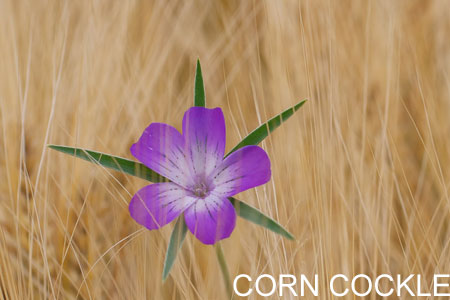
Chickens that free range may occasionally encounter weeds that are toxic. Even so, most toxic plants don’t taste good, so chickens are rarely tempted to eat them. Besides, birds peck a little here and a little there to get variety in their diet. A bite or two of a toxic leaf or seed will rarely cause a serious problem.
But just how toxic a specific plant is can vary with its stage of maturity and with environmental factors such as drought. If a chicken manages to get a potentially toxic dose, the seriousness of its effect will depend on the bird’s age and state of health. Here are 18 common weeds that are potentially toxic to chickens:
Black Locust (Robinia pseudoacacia)
Toxic parts include sprouts, leaves, pods, and seeds. Signs of toxicity include weakness, depression, bloody diarrhea, paralysis, and possible death.
Black Nightshade (Solanum nigrum)
The parts to avoid are immature berries. Signs include dilated pupils, diarrhea, incoordination, and paralysis.
Death Camas (Zygadenus spp)
Toxic parts include the leaves, flowers, stem, and bulb. Signs include diarrhea, salivation, muscle weakness, coma, and possible death.
Castor Bean (Ricinus communis)
All parts are toxic, but especially the seeds. Signs include gradual paralysis (similar to botulism), slow heart rate, diarrhea, emaciation, convulsions, and death.
Coffee Senna (Senna occidentalis)
The seeds are toxic and can cause weight loss, diarrhea, paralysis, and death.
Corn Cockle (Argrostemma githago)
Chickens that eat the toxic seeds may have rough feathers, diarrhea, slow growth, and reduced respiration and heart rate.
Cottonseed (Gossypium spp)
Chickens that eat the seeds may develop a bluish comb and wattles, emaciation, liver failure, and heart failure.
Horsenettle (Solanum carolinense)
Both the berries and leaves can cause diarrhea, weakness, slow breathing, and death.
Jimsonweed (Datura stramonium)
All parts are toxic and can cause restlessness or depression, loss of appetite, extreme thirst, and rapid breathing.
Milkweed (Asclepias spp)
Snacking on the leaves can cause incoordination, convulsions, and sometimes death.
Monkshood (Aconitum napellus)
All parts are toxic and can cause diarrhea, labored breathing, convulsions, paralysis, and death.
Oleander (Nerium oleander)
All parts are toxic, leading to weakness, diarrhea, or sudden death.
Poison Hemlock (Conium maculatum)
All parts are toxic, causing diarrhea, incoordination, slow breathing and heart rate, paralysis, and possible death.
Pokeberry (Phytolacca americana)
Eating too many berries causes anemia, bloody diarrhea, incoordination, and convulsions.
Rosary Pea (Abrus precatorius)
The highly toxic seeds can cause diarrhea, convulsions, and death.
Spanish Gold (Sesbania punicea)
Eating seeds can result in weight loss, depression, incoordination, or sudden death.
Water Hemlock (Cicuta spp.)
All parts are highly toxic, causing excitability, seizures, and death.
Yew (Taxus spp)
All parts are highly toxic, causing bluish combs and wattles, labored breathing, incoordination, coma, or sudden death.
More information on plants that are toxic to chickens may be found at Chickendvm’s A to Z database. When chickens free range, it pays to be familiar with the weeds they may encounter where they forage.
And that’s today’s news from the Cackle Coop.
Gail Damerow is author of The Chicken Health Handbook.

